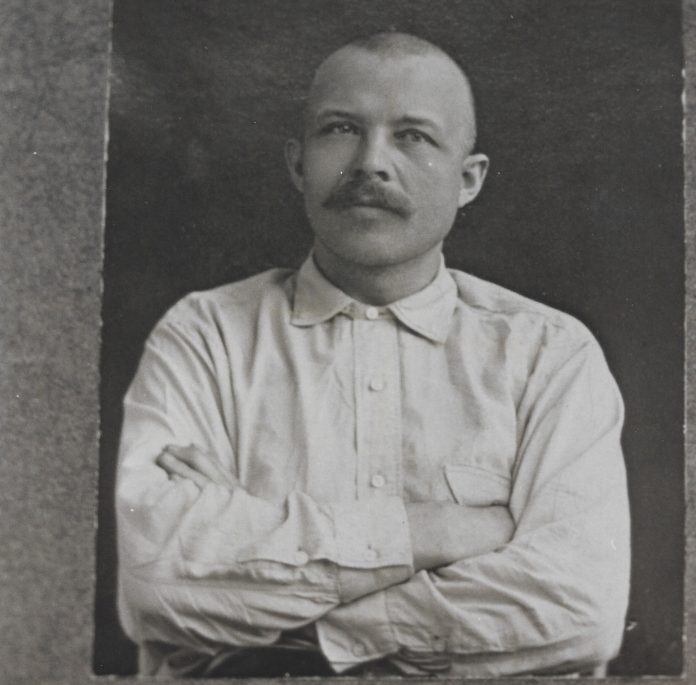
In 2020, Dr. Aaron Goings, associate professor of history at Saint Martin’s University in Olympia, published “The Port of Missing Men: Billy Gohl, Labor, and Brutal Times in the Pacific Northwest,” a scholarly inquiry into the life of William Gohl who worked as a sailors union agent in Aberdeen from 1903 to 1910. Convicted of the murder of sailor Charles Hadberg and suspected of many more, Gohl gained national notoriety as Billy Gohl, the Ghoul of Grays Harbor, or as the Madman of Aberdeen. In “History Talks: Billy Gohl: Labor and Brutal Times in the Pacific Northwest,” Goings states, “I want to revive Gohl’s reputation.”
 Around the time Billy Gohl worked on the Harbor, an unusually large number of corpses appeared in the Chehalis and Wishkah rivers. Because of this floater fleet, Grays Harbor became known as the Port of Missing Men. Goings’ convincing analysis describes how a citizen’s committee formed by Mayor E.B. Benn and wealthy local business owners conspired to blame the death of the floaters on the influential union leader William Gohl.
Around the time Billy Gohl worked on the Harbor, an unusually large number of corpses appeared in the Chehalis and Wishkah rivers. Because of this floater fleet, Grays Harbor became known as the Port of Missing Men. Goings’ convincing analysis describes how a citizen’s committee formed by Mayor E.B. Benn and wealthy local business owners conspired to blame the death of the floaters on the influential union leader William Gohl.
Goings grew up in Aberdeen and spent 20 years researching the history of William Gohl. His book recreates the abominable working conditions of sailors and longshore men at a time when Grays Harbor was the largest lumber port in the world. Mill owners were raking in huge profits while the workers who made all this possible were being shamelessly exploited. William Gohl held several leadership positions in the growing labor union movement and won important victories improving the lives of union members. His increasing power made him the prime enemy of Harbor business owners. They certainly wanted William Gohl out of the way.
 In 1910, there was little hard evidence to prove that Gohl murdered Charles Hadberg. Even the identity of the body was doubtful. Gohl’s conviction depended heavily on the testimony of sailor John Klingenberg who admitted to shooting Hadberg but claimed that Gohl threatened to shoot him if he refused. Was Klingenberg in turn threatened by the Aberdeen Citizen’s Committee? There was also the testimony of private detective/labor spy Paddy McHugh who was paid by Gohl’s enemies. Much of what we know about Gohl comes from newspaper reports. Journalists of the time were supporting their newspaper’s political affiliation with much love for scandal and little love for truth.
In 1910, there was little hard evidence to prove that Gohl murdered Charles Hadberg. Even the identity of the body was doubtful. Gohl’s conviction depended heavily on the testimony of sailor John Klingenberg who admitted to shooting Hadberg but claimed that Gohl threatened to shoot him if he refused. Was Klingenberg in turn threatened by the Aberdeen Citizen’s Committee? There was also the testimony of private detective/labor spy Paddy McHugh who was paid by Gohl’s enemies. Much of what we know about Gohl comes from newspaper reports. Journalists of the time were supporting their newspaper’s political affiliation with much love for scandal and little love for truth.
Many sources suggest that at William Gohl was set up. However, the intrigues of the Citizen’s Committee do not actually prove Gohl’s innocence. He could have been both, political enemy and murderer.
Going’s book affords us an insight into the way history is written. After diligent research, historians need to make a decision on which sources to trust and which to include in their interpretation.

Pianist and composer Alex Eddy, well-known as a director and writer in our musical theater community, leans toward Going’s interpretation. “I’ve had the idea of writing a Billy Gohl musical since high school,” he shares. “I was just never able to wrap my head around how to tell the story. Something always seemed off about it. When I read ‘The Port of Missing Men,’ the pieces all kind of clicked, and I saw that the show wasn’t about a monster; it’s about a man who threatened the system while wanting to be a part of that system.” Eddy, who is collaborating with Joe Shay, hopes to finish his musical by the end of 2021 to be performed by the Plank Island Theatre Company he recently founded with Julayne Fleury. Visit the Plank Island Theatre website or visit the Plank Island Theatre Facebook page for more information.
Bill Lindstrom, former city editor of the Aberdeen Daily World and local historian, is working on a rebuttal of “The Port of Missing Men.” “While I admire his scholarship, I take exception with Going’s interpretation,” says Lindstrom. “He did not mention vital information.” Lindstrom is conducting extensive research. He has accumulated an impressive collection of references, 1,600 multiple-page PDFs so far.

Lindstrom would have liked the following points addressed in Going’s book. Forty-one of the bodies had three common features: They were sailors, they were single, they did not have any money in their pockets. Some of them were weighted with bricks. There is also the question of the $10,000 deposited by union sailors in Gohl’s safe, which had disappeared at the time of the trial.
Then, there was the case of an identification of a corpse made by Gohl in 1908. Gohl told Cosmopolis Constable George Dean that the man’s name was Otto Kurtz. Dean had found a watch on the corpse inscribed with this name, but an inquiry in Germany discovered that Otto Kurtz was the watchmaker’s name and that the watch had been sold to a man named Rudolph Alterman. How did Gohl come up with the name Kurtz unless he had seen the watch?
Bill Lindstrom expects his book to come out in 2023. We can look forward to another well-documented inquiry into the life of Billy Gohl. Was he a serial killer or working class hero?












































